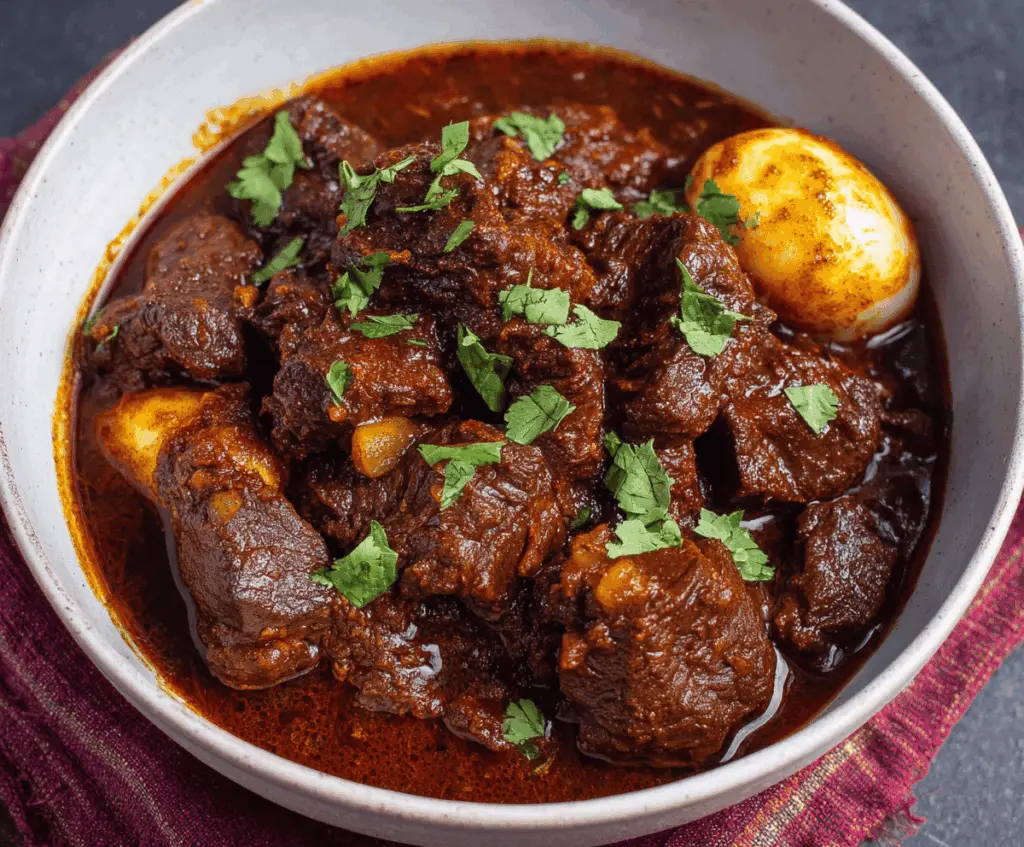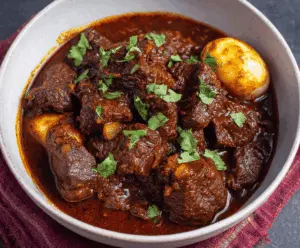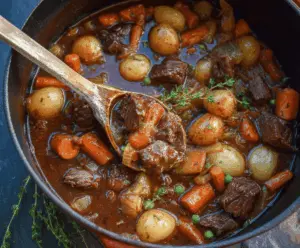This Ethiopian Beef Stew, known as Doro Wat, is a warming dish packed with tender beef, spicy berbere seasoning, and a rich, savory sauce. It’s a hug in a bowl!
Cooking this stew fills your kitchen with the most amazing aromas. I love serving it with warm injera bread—it’s the best part, trust me!
Key Ingredients & Substitutions
Beef Chuck: This cut is ideal for stew because it becomes super tender after slow cooking. If it’s not available, try using a chuck roast or even brisket for a similar texture.
Niter Kibbeh: For the traditional taste, this spiced clarified butter is essential. If you can’t find it, using regular unsalted butter is fine. You might want to add some spices like cinnamon or turmeric to mimic the flavors.
Berbere Spice Mix: This spice mix is what makes the dish pop! If you don’t have it, create a substitute with paprika, cayenne, and a mix of spices like cumin and coriander for a hint of the essential heat.
Hard-Boiled Eggs: These eggs enrich the stew! If you prefer none, you can skip them or substitute with chickpeas for added protein and texture.
How Do I Caramelize Onions Properly?
Caramelizing onions right is key for this stew’s flavor. Here’s a simple guide:
- Use medium-low heat. Cooking them slowly helps sugars caramelize without burning.
- Stir often to keep them from sticking. This takes about 30-40 minutes for the best results.
- If they start to stick, add a splash of water to loosen them up.
You’ll know they’re ready when they’re deeply golden and sweet—perfect for your stew!
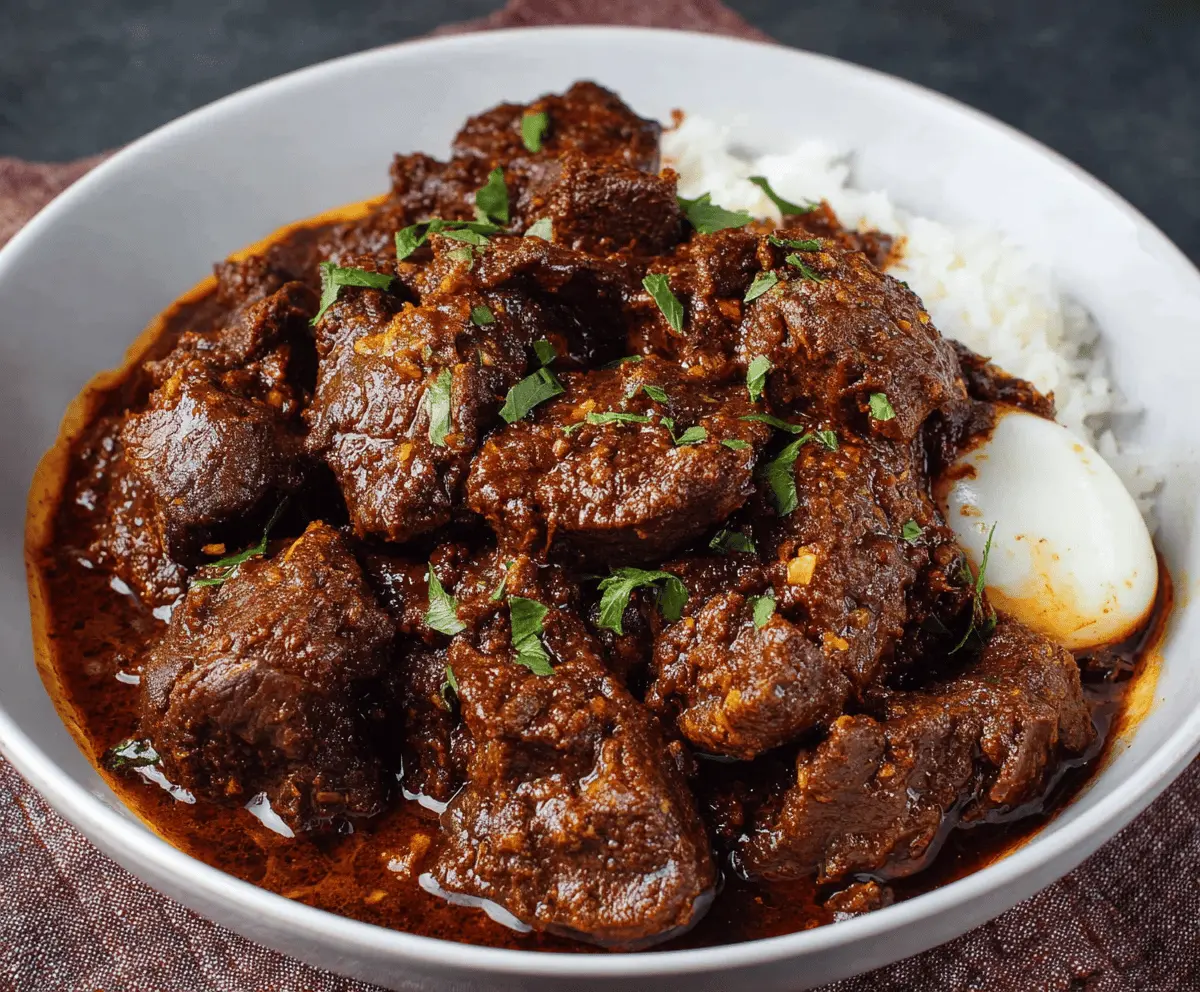
Ethiopian Beef Stew (Sega Wat)
Ingredients:
- 2 lbs beef chuck, cut into 1.5-inch cubes
- 3 large onions, finely chopped
- 1/4 cup niter kibbeh (Ethiopian spiced clarified butter) or regular unsalted butter
- 3 tablespoons berbere spice mix
- 4 cloves garlic, minced
- 1 tablespoon fresh ginger, minced
- 2 cups beef broth or water
- Salt to taste
- 4 hard-boiled eggs (optional)
- Fresh cilantro or parsley, chopped for garnish
Time Needed:
This hearty stew takes about 30-40 minutes to prepare and about 1.5 to 2 hours to cook, giving you ample time to enjoy the delicious aromas filling your kitchen.
Instructions:
1. Caramelizing the Onions:
In a large heavy-bottomed pot, heat over medium heat. Add the chopped onions and cook them without oil, stirring frequently. Allow them to slowly caramelize until they turn into a thick, sweet paste, which can take about 30-40 minutes. This step is essential for building a rich flavor in your stew.
2. Adding Niter Kibbeh:
Once the onions are nicely caramelized, add the niter kibbeh or butter. Stir until it melts and combines well with the onions, enhancing the flavor profile.
3. Mixing in Garlic and Ginger:
Add the minced garlic and ginger to the pot, cooking for about 2 minutes until they’re fragrant and well integrated with the onion mixture.
4. Incorporating the Spices:
Sprinkle in the berbere spice mix and continue to cook for another 3-5 minutes. Stir frequently to allow the spices to release their delicious aroma.
5. Cooking the Beef:
Raise the heat to medium-high, add the beef cubes, and stir well until they are coated with the onion and spice mixture. Cook for about 5-7 minutes, allowing the beef to brown slightly.
6. Simmering the Stew:
Pour in the beef broth or water, mixing everything thoroughly. Bring it to a boil, then reduce the heat to low, cover, and let it simmer gently for 1.5 to 2 hours. This slow cooking makes the beef tender and the sauce thick and flavorful.
7. Adding Hard-Boiled Eggs:
If you’re using them, add the hard-boiled eggs in the last 10 minutes of cooking. This lets them soak in the spices and flavors.
8. Final Seasoning:
Before serving, taste the stew and season with salt as needed.
9. Serving:
Dish out the stew hot, garnished with fresh cilantro or parsley. It’s traditionally served with injera bread or rice, making it a complete meal!
Enjoy your rich, spicy Ethiopian Beef Stew! It’s a warm, comforting dish that’s perfect for sharing with family and friends.
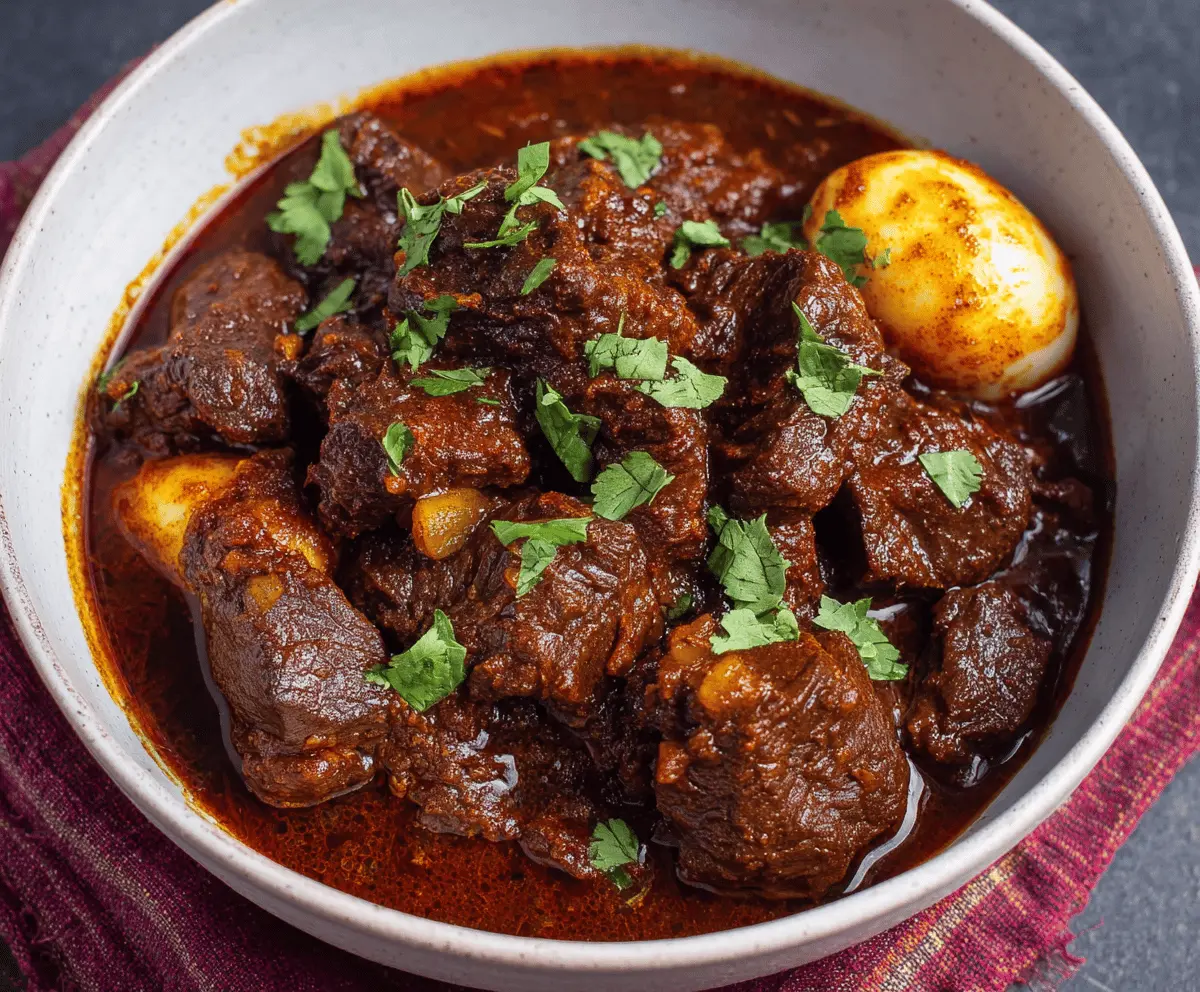
Can I Use a Different Cut of Beef?
Absolutely! While beef chuck is ideal for its tenderness, you can also use brisket or round. Just keep in mind that cooking times may vary slightly based on the cut you choose.
What If I Can’t Find Berbere Spice Mix?
No worries! You can create a substitute using a combination of paprika, cayenne pepper, cumin, and coriander. Adjust the spices to your heat preference for a similar flavor profile.
How Do I Store Leftovers?
Store any leftovers in an airtight container in the fridge for up to 3 days. To reheat, do so gently on the stove for even heating, or use the microwave, stirring occasionally.
Can I Make This Stew Vegetarian?
Yes! To make a vegetarian version, replace the beef with hearty vegetables like mushrooms, eggplant, or chickpeas, and use vegetable broth instead of beef broth for a flavorful alternative.
